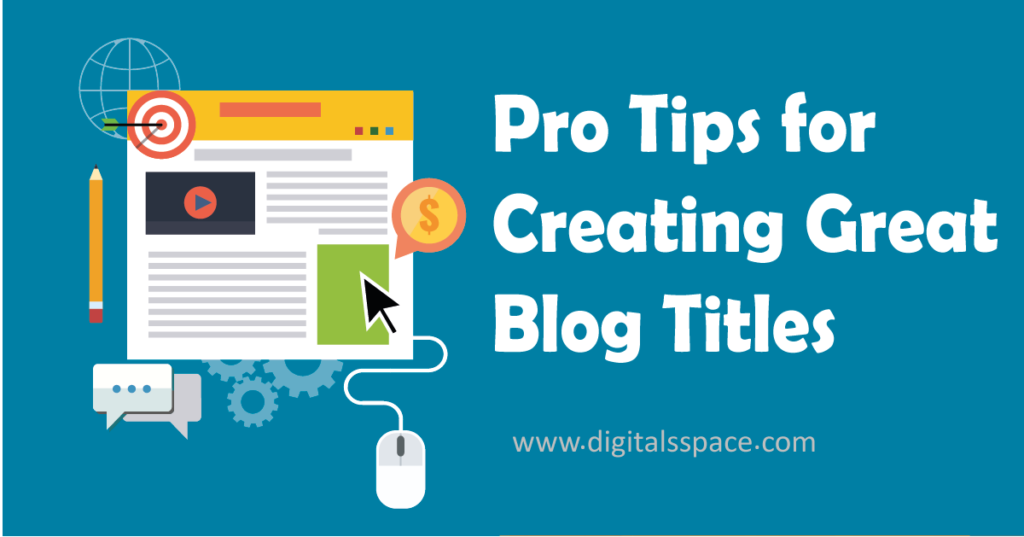Crafting an engaging and optimized blog title is one of the most critical steps in blogging. Whether you’re just starting out or looking to improve your existing content, understanding how to write an effective title can make a huge difference in driving traffic, boosting SEO rankings, and capturing your reader’s attention. In this beginner’s guide, we’ll dive into the essential components that will help you create optimal blog titles that are both user-friendly and SEO-friendly.
Why Your Blog Title Matters
Your blog title is the first impression you make on both readers and search engines. A good title can:
- Grab Attention: A compelling title piques curiosity and invites readers to click and read more.
- Boost SEO: Including relevant keywords in your title improves your chances of ranking higher on search engine results pages (SERPs).
- Set Expectations: A well-written title tells readers exactly what they’ll gain from reading your post, ensuring they stick around.
If your title isn’t optimized, you’re likely losing traffic. Even the best-written blog can go unnoticed if the title doesn’t entice readers or doesn’t rank well in search results.
Essential Components of an Optimal Blog Title
When crafting the perfect blog title, there are a few key elements you should consider to optimize it for both readers and search engines:
1. Keep It Concise
Long titles tend to get cut off in search engine results and don’t always grab attention. Aim for 50-60 characters, as that’s the sweet spot where your title is less likely to be truncated by Google. Keeping it concise also ensures that your readers get the gist of your content quickly.
2. Use Targeted Keywords
One of the most important aspects of optimizing a blog title is incorporating relevant keywords. Keywords are the terms your audience is searching for, and including them in your title increases the chances of your post appearing in search results.
For example, if your blog is about fitness, a title like “Top 10 Tips for Beginners to Start a Fitness Routine” might perform better than a more generic title like “Fitness Tips for Beginners.” The former includes targeted phrases that match common search queries.
- Tip: Use tools like Google Keyword Planner, SEMrush, or Ubersuggest to find popular keywords in your niche.

3. Make It Engaging and Specific
Generic titles can come across as boring and vague. You want your title to promise value to the reader. Instead of writing something like “How to Cook Better,” try something more specific like, “5 Simple Techniques to Instantly Improve Your Cooking Skills.” The latter provides specific takeaways, making it more engaging and informative.
4. Incorporate Numbers and Lists
Titles with numbers tend to generate more clicks because they promise a clear structure. Posts like “10 Best Tools for Digital Marketing” or “7 Reasons You Need to Try Yoga Today” convey a specific number of tips or reasons, making it easier for the reader to know what to expect.
- Why this works: Numbers help break down complex topics, providing bite-sized, digestible content. Readers often prefer posts with lists because they can scan through the content and still get valuable insights.
Read this also: How to get your site noticed by Google Search in 2025
5. Use Power Words
Power words are emotional and action-driven phrases that can create curiosity or urgency. Words like “Ultimate,” “Proven,” “Best,” “Instant,” or “Easy” can make your title stand out. These words tap into the reader’s emotions, making them feel like your content will deliver on their needs.
Example: “The Ultimate Guide to Creating an Engaging Blog” is far more compelling than simply “How to Create a Blog.”
6. Consider Your Audience’s Pain Points
Understanding your audience’s needs and problems is key. If your title directly addresses their concerns or pain points, they’re more likely to click on it. For example, “How to Reduce Blog Writing Time by Half” speaks to the pain point of time management that many bloggers face.
By addressing a specific problem and offering a solution, you make your title instantly more relevant to your readers.
7. Test Different Variations
It’s important to experiment with different title variations to see what resonates most with your audience. A/B testing tools like CoSchedule’s Headline Analyzer or Sharethrough’s Headline Analyzer can give you insights into the effectiveness of your blog title before you hit publish.
Common Mistakes to Avoid When Creating Blog Titles
Even with the best intentions, it’s easy to make mistakes when creating blog titles. Here are a few things to watch out for:
- Being Too Vague: If your title is too generic, readers won’t know what value your content offers.
- Keyword Stuffing: Don’t overload your title with keywords, as it can seem unnatural and off-putting to readers and search engines alike.
- Overpromising: Avoid clickbait. While it might get you more clicks, it can hurt your credibility in the long run if your content doesn’t deliver on the title’s promise.
Conclusion
Creating the perfect blog title is an art and a science. It requires a balance of creativity, strategy, and understanding of your audience’s needs. By focusing on clarity, incorporating keywords, and making your title engaging, you can significantly boost your blog’s visibility and impact. Remember to keep testing and refining your approach over time. With these tips in hand, you’re well on your way to crafting optimal blog titles that attract readers and improve your SEO rankings.
Happy blogging!

